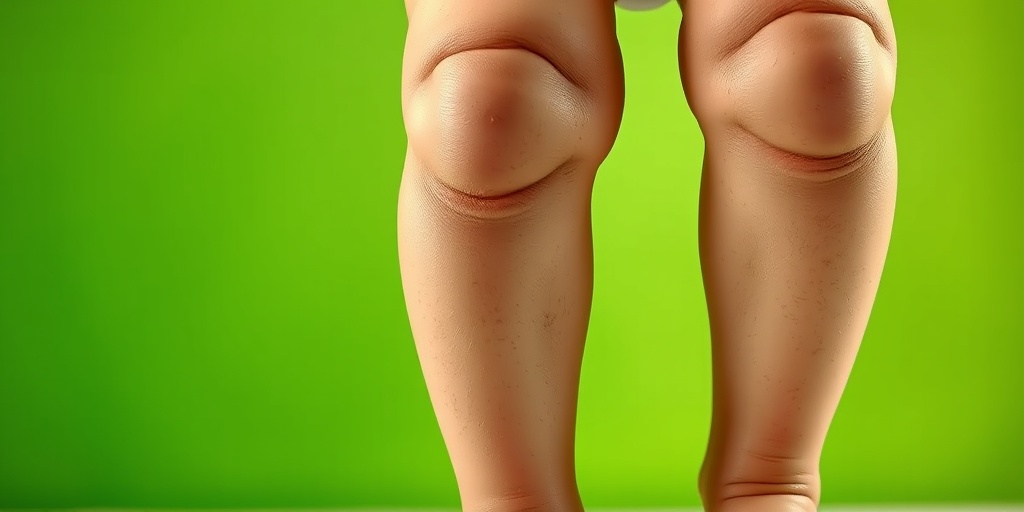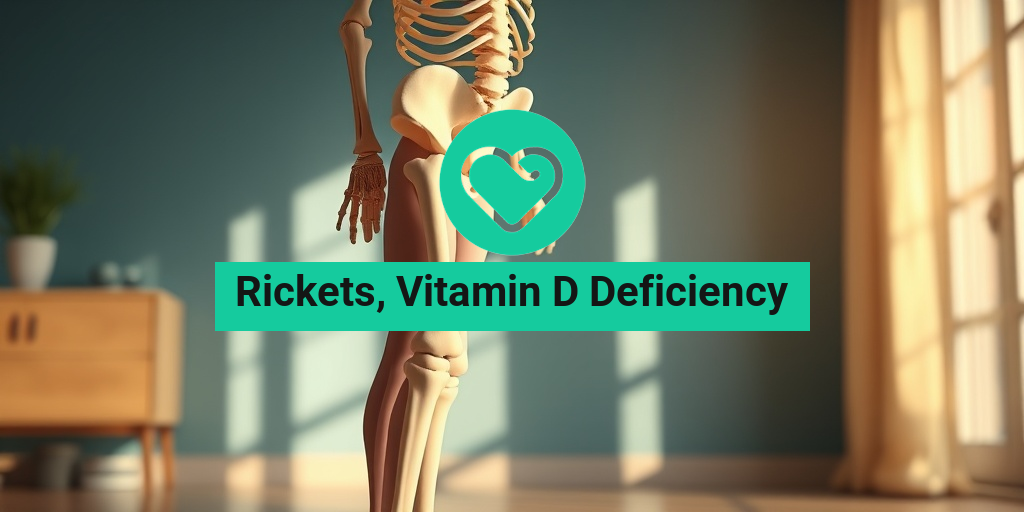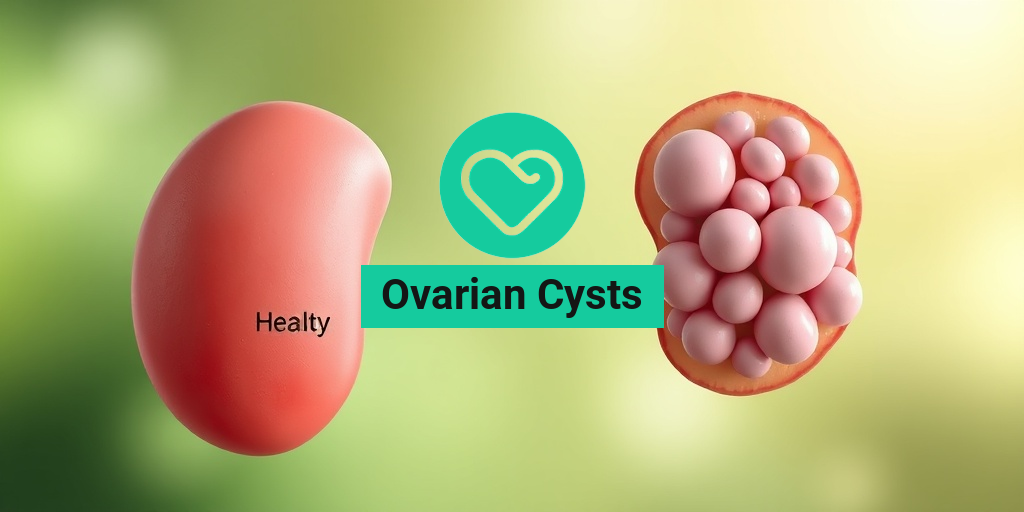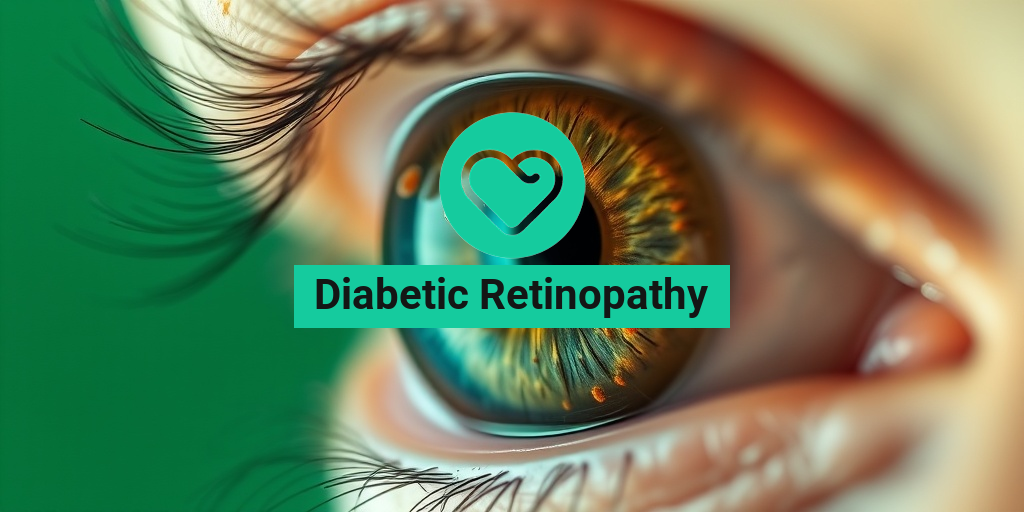What Is Rickets?
Rickets is a childhood bone disorder that results from a deficiency of vitamin D, calcium, or phosphate. This condition leads to softening and weakening of bones, which can result in deformities and growth disturbances. Rickets primarily affects children, particularly those who are still growing, making it crucial for parents and caregivers to understand its causes and implications.
The most common cause of rickets is a vitamin D deficiency. Vitamin D is essential for the body to absorb calcium and phosphate from the diet, which are vital for healthy bone development. Without adequate vitamin D, bones can become weak and deformed, leading to the characteristic symptoms of rickets.
Causes of Rickets
Rickets can be caused by several factors, including:
- Insufficient Vitamin D Intake: A diet lacking in vitamin D-rich foods such as fatty fish, egg yolks, and fortified dairy products can lead to deficiency.
- Limited Sun Exposure: Vitamin D is often referred to as the “sunshine vitamin” because the body produces it when the skin is exposed to sunlight. Children who spend little time outdoors or live in areas with limited sunlight are at higher risk.
- Malabsorption Disorders: Conditions that affect the absorption of nutrients in the intestines, such as celiac disease or cystic fibrosis, can lead to rickets.
- Genetic Factors: Some forms of rickets are inherited and result from genetic mutations that affect vitamin D metabolism.
Rickets Symptoms
The symptoms of rickets can vary depending on the severity of the deficiency and the age of the child. Early detection is crucial for effective treatment and prevention of long-term complications. Here are some common symptoms to watch for:
Physical Symptoms
- Bone Pain or Tenderness: Children with rickets may experience discomfort in their bones, particularly in the legs, spine, and pelvis.
- Delayed Growth: A noticeable slowdown in growth and development can occur, leading to shorter stature compared to peers.
- Deformities: Rickets can cause skeletal deformities such as bowed legs, thickened wrists and ankles, and a protruding breastbone.
- Muscle Weakness: Weakness in the muscles can accompany bone issues, making it difficult for children to perform physical activities.
Behavioral Symptoms
In addition to physical symptoms, children with rickets may exhibit behavioral changes, such as:
- Fatigue: Increased tiredness or lethargy can be a sign of underlying health issues.
- Irritability: Children may become more irritable or fussy, which can be attributed to discomfort or pain.
Diagnosis and Treatment
If you suspect your child may have rickets, it’s essential to consult a healthcare professional. Diagnosis typically involves a physical examination, a review of dietary habits, and blood tests to check vitamin D, calcium, and phosphate levels.
Treatment for rickets often includes:
- Vitamin D Supplements: Administering vitamin D supplements can help restore adequate levels in the body.
- Dietary Changes: Incorporating vitamin D-rich foods into the child’s diet can support bone health.
- Sun Exposure: Encouraging safe sun exposure can help the body produce more vitamin D naturally.
In severe cases, additional medical interventions may be necessary, including medications or even surgery to correct bone deformities.
Understanding rickets and its symptoms is vital for early intervention and treatment. If you’re looking for more information on health-related topics, consider visiting Yesil Health AI for evidence-based answers to your health questions. 🌟

Rickets Causes
Rickets is a condition that primarily affects children, leading to soft and weak bones. The most common cause of rickets is a deficiency in vitamin D, which is crucial for calcium absorption in the body. When children do not get enough vitamin D, their bodies struggle to maintain adequate levels of calcium and phosphorus, essential minerals for bone health. Let’s explore the various causes of rickets in more detail.
Vitamin D Deficiency
Vitamin D is vital for bone development and growth. It can be obtained through:
- Sunlight: The skin synthesizes vitamin D when exposed to sunlight. Insufficient sun exposure, especially in regions with long winters or for individuals who spend most of their time indoors, can lead to a deficiency.
- Diet: Foods rich in vitamin D, such as fatty fish, fortified dairy products, and egg yolks, are essential. A diet lacking these foods can contribute to rickets.
- Absorption Issues: Certain medical conditions, like celiac disease or cystic fibrosis, can hinder the body’s ability to absorb vitamin D effectively.
Calcium and Phosphorus Deficiency
While vitamin D is crucial, a lack of calcium and phosphorus can also lead to rickets. These minerals are necessary for bone mineralization. A diet low in these nutrients can result in weak bones, even if vitamin D levels are adequate.
Genetic Factors
Some forms of rickets are inherited. Genetic mutations can affect how the body processes vitamin D or minerals, leading to conditions like hypophosphatemic rickets, where the kidneys excrete too much phosphorus. This genetic predisposition can make certain children more susceptible to rickets, regardless of their vitamin D intake.
Other Medical Conditions
Several medical conditions can contribute to the development of rickets. For instance:
- Kidney Disorders: Conditions affecting kidney function can disrupt the balance of minerals in the body, leading to rickets.
- Liver Disease: The liver plays a role in converting vitamin D into its active form. Liver dysfunction can impair this process.
Rickets Risk Factors
Understanding the risk factors for rickets is crucial for prevention and early intervention. Here are some key factors that can increase the likelihood of developing rickets:
Age and Development
Rickets primarily affects children, particularly those between the ages of 6 months and 3 years. During this period, rapid bone growth occurs, making adequate nutrition essential. Infants who are exclusively breastfed without vitamin D supplementation are also at higher risk, as breast milk typically contains low levels of vitamin D.
Geographical Location
Living in areas with limited sunlight can significantly increase the risk of vitamin D deficiency. Regions with long winters or high latitudes may not provide sufficient sunlight for adequate vitamin D synthesis, especially during the colder months. 🌍
Skin Pigmentation
Individuals with darker skin have more melanin, which can reduce the skin’s ability to produce vitamin D from sunlight. As a result, children with darker skin tones may require more sun exposure to achieve adequate vitamin D levels.
Dietary Habits
A diet lacking in vitamin D, calcium, and phosphorus can lead to rickets. Children who consume a diet high in processed foods and low in nutrient-rich foods are at a greater risk. Parents should ensure their children have a balanced diet that includes:
- Fortified cereals
- Leafy greens
- Fish and seafood
- Dairy products
Socioeconomic Factors
Children from lower socioeconomic backgrounds may have limited access to nutritious foods and healthcare, increasing their risk of rickets. Education about nutrition and access to vitamin D supplements can play a crucial role in prevention.
Health Conditions
As mentioned earlier, certain health conditions can predispose children to rickets. Conditions that affect nutrient absorption or metabolism can significantly increase the risk. Regular check-ups and monitoring can help identify at-risk children early on.
By understanding the causes and risk factors associated with rickets, parents and caregivers can take proactive steps to ensure children receive the necessary nutrients for healthy bone development. 🌟

Rickets Diagnosis
Diagnosing rickets, particularly when it stems from a vitamin D deficiency, involves a combination of clinical evaluation, medical history, and specific tests. Understanding the signs and symptoms is crucial for early detection and effective treatment.
Signs and Symptoms
Rickets primarily affects children, and its symptoms can vary. Common signs include:
- Bone pain or tenderness: Children may complain of discomfort in their bones, particularly in the legs and spine.
- Delayed growth: A noticeable slowdown in growth can be a significant indicator.
- Weakness: Muscle weakness may accompany bone issues, making it difficult for children to perform physical activities.
- Deformities: Look for signs of bowing in the legs or a protruding breastbone.
- Dental problems: Delayed tooth development and enamel defects can also be associated with rickets.
Medical History and Physical Examination
During a visit to the healthcare provider, a thorough medical history will be taken. This includes:
- Dietary habits: Assessing the intake of vitamin D, calcium, and phosphorus.
- Family history: Understanding any genetic predispositions to bone disorders.
- Sun exposure: Evaluating how much sunlight the child receives, as sunlight is a natural source of vitamin D.
A physical examination will focus on identifying any physical deformities and assessing the child’s overall health. If rickets is suspected, further tests may be ordered.
Diagnostic Tests
To confirm a diagnosis of rickets, healthcare providers may recommend:
- Blood tests: These tests measure levels of vitamin D, calcium, and phosphorus in the blood. Low levels of these nutrients can indicate rickets.
- X-rays: Imaging studies can reveal changes in bone structure, such as widening of growth plates or bone deformities.
- Bone density tests: These tests assess the strength and density of bones, helping to determine the severity of the condition.
Early diagnosis is essential for effective treatment and to prevent long-term complications associated with vitamin D deficiency rickets. If you suspect your child may have rickets, consult a healthcare professional promptly. 🩺
Rickets Treatment Options
Treating rickets, especially when caused by a vitamin D deficiency, focuses on replenishing the body’s vitamin D levels and addressing any underlying nutritional deficiencies. Here are the primary treatment options available:
Vitamin D Supplementation
The cornerstone of treatment for rickets due to vitamin D deficiency is vitamin D supplementation. Depending on the severity of the deficiency, healthcare providers may recommend:
- High-dose vitamin D: In cases of severe deficiency, high doses may be prescribed initially to quickly restore levels.
- Maintenance doses: Once levels are normalized, a lower maintenance dose is typically recommended to prevent recurrence.
Calcium and Phosphorus Supplementation
In addition to vitamin D, ensuring adequate intake of calcium and phosphorus is crucial for bone health. Supplements may be necessary if dietary intake is insufficient. Foods rich in these minerals include:
- Dairy products: Milk, cheese, and yogurt are excellent sources of calcium.
- Leafy greens: Vegetables like kale and broccoli provide both calcium and phosphorus.
- Fish: Fatty fish such as salmon and sardines are also rich in vitamin D and calcium.
Dietary Changes
Incorporating foods high in vitamin D, calcium, and phosphorus into the child’s diet is essential. Some dietary recommendations include:
- Fortified foods: Look for cereals and milk fortified with vitamin D.
- Eggs: A good source of vitamin D, eggs can be a nutritious addition to meals.
- Sun exposure: Encourage safe sun exposure, as sunlight helps the body produce vitamin D naturally.
Physical Therapy
For children with significant bone deformities or weakness, physical therapy may be beneficial. A physical therapist can design a program to improve strength, flexibility, and coordination, helping the child regain normal function. 🏃♂️
In severe cases where deformities do not improve with treatment, surgical intervention may be necessary to correct bone abnormalities. However, this is typically a last resort after other treatment options have been explored.
Overall, early diagnosis and a comprehensive treatment plan are vital in managing rickets and ensuring healthy bone development in children. If you suspect your child may be at risk, consult a healthcare professional for guidance. 🌟

Rickets Prevention
Rickets is a serious condition that primarily affects children, leading to weakened bones and skeletal deformities. The primary cause of rickets is a deficiency in vitamin D, calcium, or phosphate. Fortunately, there are effective strategies for preventing rickets and ensuring that children grow up healthy and strong. Here are some key prevention methods:
1. Ensure Adequate Vitamin D Intake
Vitamin D plays a crucial role in calcium absorption and bone health. To prevent rickets, it’s essential to ensure that children receive enough vitamin D through:
- Sunlight Exposure: The body produces vitamin D when the skin is exposed to sunlight. Aim for about 15-30 minutes of sun exposure several times a week, depending on skin type and geographical location. ☀️
- Dietary Sources: Incorporate foods rich in vitamin D into your child’s diet. These include fatty fish (like salmon and mackerel), fortified dairy products, and egg yolks.
- Supplements: If dietary intake and sunlight exposure are insufficient, consider vitamin D supplements. Consult with a healthcare provider for appropriate dosages.
2. Promote a Balanced Diet
A well-rounded diet is vital for preventing rickets. Ensure that your child’s meals include:
- Calcium-Rich Foods: Foods such as milk, cheese, yogurt, and leafy greens are excellent sources of calcium, which is essential for bone health.
- Phosphate Sources: Include foods like meat, fish, nuts, and beans, which are rich in phosphate and support bone development.
3. Regular Health Check-Ups
Routine check-ups with a pediatrician can help monitor your child’s growth and nutritional status. During these visits, discuss:
- Bone Health: Ask about your child’s bone health and whether any tests for vitamin D levels are necessary.
- Growth Patterns: Keep track of your child’s growth to identify any potential issues early on.
4. Educate About Rickets
Awareness is key in preventing rickets. Educate yourself and your family about the condition, its causes, and its symptoms. Understanding the importance of vitamin D and calcium can motivate families to make healthier choices. 📚
Rickets in Children
Rickets is predominantly seen in children, particularly those aged 6 months to 3 years. This condition can lead to significant health issues if not addressed promptly. Understanding the symptoms and implications of rickets is crucial for parents and caregivers.
What is Rickets?
Rickets is a bone disorder that occurs when a child’s bones do not mineralize properly, leading to soft and weak bones. This condition is primarily caused by a deficiency in vitamin D, calcium, or phosphate. The lack of these essential nutrients can result in various skeletal deformities and growth issues.
Symptoms of Rickets
Recognizing the symptoms of rickets early can lead to timely intervention. Common symptoms include:
- Delayed Growth: Children with rickets may experience slower growth rates compared to their peers.
- Bowed Legs: One of the most noticeable signs is the development of bowed legs or other deformities in the limbs.
- Bone Pain: Children may complain of pain in their bones or joints, particularly in the legs and spine.
- Weakness: Muscle weakness can also be a symptom, making it difficult for children to perform physical activities.
Diagnosis and Treatment
If rickets is suspected, a healthcare provider will typically conduct a physical examination and may recommend blood tests to check vitamin D, calcium, and phosphate levels. Treatment options may include:
- Vitamin D Supplements: Administering vitamin D supplements can help restore adequate levels in the body.
- Dietary Changes: Adjusting the child’s diet to include more calcium and phosphate-rich foods is essential.
- Physical Therapy: In some cases, physical therapy may be recommended to strengthen muscles and improve mobility.
Understanding rickets and vitamin D deficiency is vital for ensuring the health and well-being of children. By taking proactive steps in prevention and recognizing the symptoms early, parents can help their children lead healthy, active lives. 🌟

Frequently Asked Questions about Rickets and Vitamin D Deficiency
What is Rickets?
Rickets is a childhood bone disorder that results in soft and weakened bones, primarily caused by a deficiency of vitamin D, calcium, or phosphate. This condition can lead to skeletal deformities and growth issues in children.
What are the symptoms of Rickets?
Common symptoms of rickets due to vitamin D deficiency include:
- Delayed growth and development
- Pain in the bones or joints
- Weakness or muscle pain
- Deformities such as bowed legs or thickened wrists and ankles
- Dental problems, including delayed tooth formation
How does vitamin D deficiency lead to Rickets?
Vitamin D deficiency affects the body’s ability to absorb calcium and phosphate, which are essential for healthy bone development. Without adequate vitamin D, bones can become soft and weak, leading to the development of rickets.
Can Rickets be treated?
Yes, rickets caused by vitamin D deficiency can be treated effectively. Treatment typically involves:
- Increasing dietary intake of vitamin D and calcium
- Supplementation with vitamin D
- Exposure to sunlight to boost natural vitamin D production
Is Rickets the same as Vitamin D deficiency?
While rickets is a condition that arises from vitamin D deficiency, not all cases of vitamin D deficiency lead to rickets. Rickets specifically refers to the skeletal issues that arise in children due to this deficiency.
Who is at risk for developing Rickets?
Children who are at higher risk for developing rickets include:
- Those with limited sun exposure
- Children with darker skin, as they require more sunlight to produce vitamin D
- Infants who are exclusively breastfed without vitamin D supplementation
- Children with certain medical conditions that affect nutrient absorption
What are the long-term effects of untreated Rickets?
If left untreated, rickets can lead to permanent bone deformities, increased risk of fractures, and potential complications in growth and development. Early diagnosis and treatment are crucial for preventing these long-term effects.
How can I prevent Rickets?
Preventing rickets involves ensuring adequate intake of vitamin D and calcium through:
- A balanced diet rich in dairy products, fish, and fortified foods
- Regular exposure to sunlight
- Vitamin D supplementation as recommended by a healthcare provider
When should I see a doctor?
If you notice any symptoms of rickets in your child or have concerns about their growth and development, it is important to consult a healthcare professional for evaluation and guidance.




